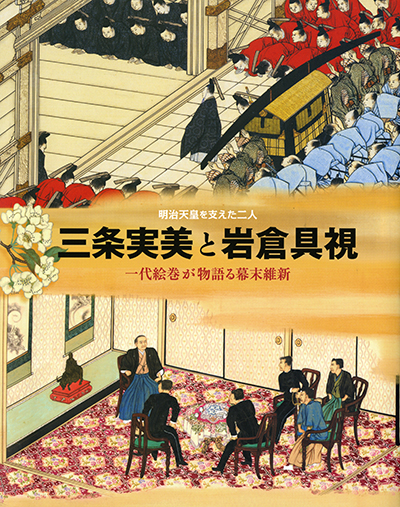| image | information |
|---|---|
 |
The new government established due to the Decree for the Restoration of Imperial Rule issued on December 9th, 1867, challenged to reform Japan by promoting modernization led by Emperor Meiji, in attempt to line up with the western great powers. The young Emperor still in his teens, was to face many difficult situations, supported by Sanjo Sanetomi (1837-91) and Iwakura Tomomi (1825-83). Sanjo Sanetomi was from the distinguished Sanjo family, which was the head Seiga family (one of the highest court noble families in Japan), next to the Sekke (line of regents and advisors). Iwakura Tomomi was from a family not so highly ranked, but he stood out with his brilliance and became a close advisor of Emperor Komei. Sanjo was a central figure of the Imperialism and exclusionism, while Iwakura asserted the Union of the Imperial Court and the Shogunate, within the court which swayed between opening the country and exclusion of foreigners, in the end of Edo period. Seemingly contrastive, both of them aimed towards the restoration of Imperial rule. When this aspiration became reality, the two cooperated in supporting the Emperor, and exerted for the new nation. Sanjo became Dajo-daijin (Grand Minister), the highest rank of the Dajokan (Grand Council of the State), and Iwakura became Udaijin (Minister of the Right), acting as the two pillars of the new Meiji government. They were always good advisors to Emperor Meiji, and reported their opinions to the Emperor on how the nation should proceed, and courteously assisted the Imperial rule. The project to compile their chronicle history to record their achievements, began under Imperial order after Iwakura passed away, followed by the creation of these sets of picture scrolls that depict their lives, shows how special Sanjo and Iwakura were to Emperor Meiji. These sets of biographical picture scrolls on these two statesmen who contributed to the Meiji Restoration, are works incomparable among modern painting history in quality and quantity, and the various incidents that occurred in the same era illustrated among them while covering their lives, have a valuable meaning as the visualization of the formation process of the modern nation. In this exhibition, we consider about the role that these two people played in the end of the Edo period through the Meiji Restoration, and also introduce the charm of the painter, Tanaka Yubi, through these sets of biographical picture scrolls. The presence of Tanaka Yubi who showed a painting style anticipating the modern era while succeeding the Yamatoe tradition, is also a quite interesting factor among modern painting history. We hope our visitors will thoroughly enjoy this occasion which is the first time for these picture scrolls to be introduced to the public. |